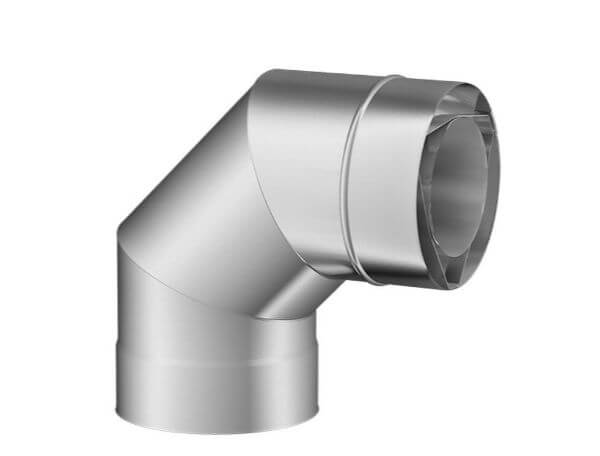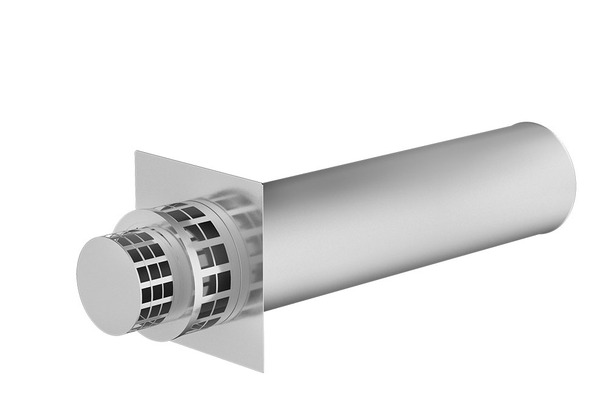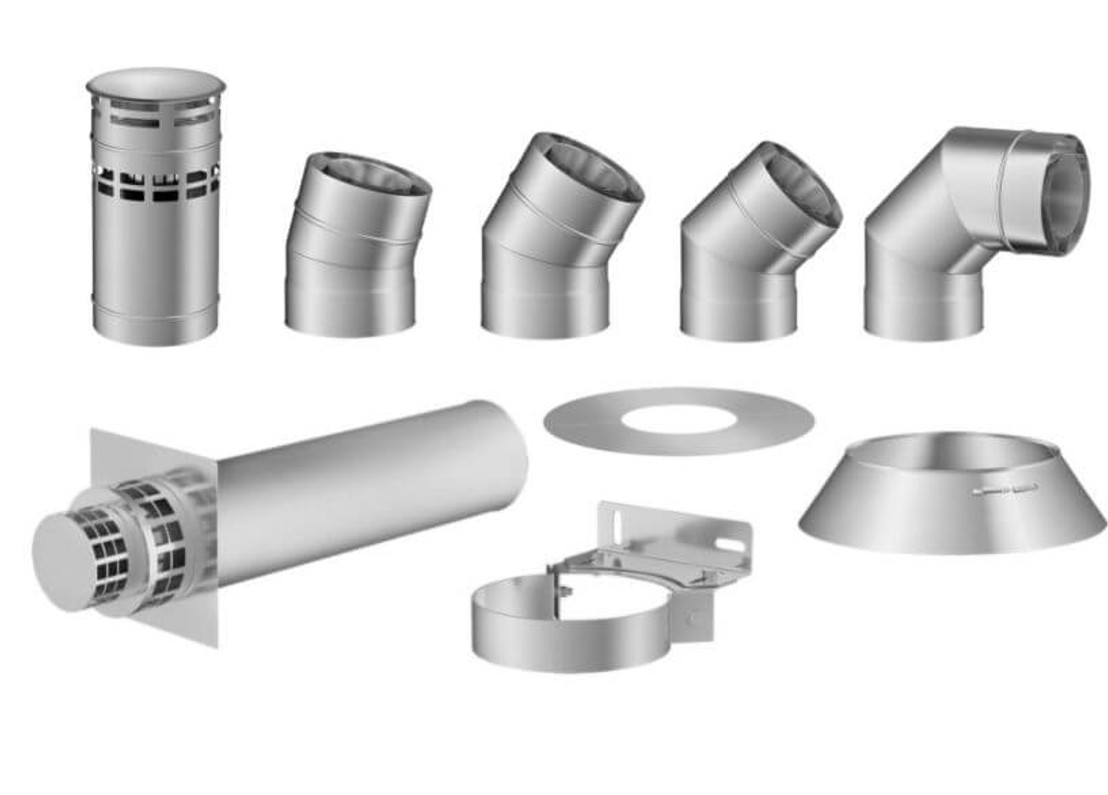What is a Balanced Flue?
A balanced flue is a type of flue that can be used to install a gas fire into a building without a conventional chimney. They can only be used with a compatible glass-front balanced flue appliance and can’t be used with any other solid fuel burning fire or stove.
The use of balanced flues is very popular in modern houses, which are now often built without a conventional chimney or fireplace. They can be installed easily through almost any external wall, giving pretty much all homes the possibility of a cosy gas fire or stove!
Not only this, but balanced flues are one of the most efficient types of flue, as less heat is lost in the combustion process - we will explain more about how this works below...
How Does a Balanced Flue Work?
A balanced flue system works by using its own special kind of exhaust pipe. With a double-walled construction, it features a hollow inner tube enclosed by another hollow outer tube.
The inner tube works by drawing out the exhaust gasses from inside the fire or stove, expelling them safely outside.
The outer tube works by drawing in fresh air from outside and pulling it back into the fire to feed the flames.
The result is a two-way air flow, with gas being drawn in and pushed out of the fire simultaneously through the same pipe.
Remember! While a balanced flue does have a double-wall construction, this is different from a twin wall flue which has its outer tube filled with a layer of insulation.

Balanced Flues Efficiency
As we mentioned earlier, the way in which balanced flues work makes them extremely efficient. This is because the flame must be completely sealed off from your room. You might think this would result in less heat - but it is actually the opposite!
With a sealed glass front, balanced flue gas fires can push more heat forward into your room, as less heat is lost up the chimney and through any other ventilation. This also makes them incredibly safe, as there is less risk of carbon monoxide escaping into your home - though you should still always have a working alarm installed to protect yourself.
How Does a Balanced Flue Differ From a Conventional Flue?
You might be wondering exactly how a balanced flue is different to a conventional flue.
There is one key difference that separates the two - the way the air is taken into the appliance:
- A balanced flue is known as a ‘closed flue’ system
- A conventional flue or chimney is knowns as an ‘open flue’ system
All fires need to take in oxygen in order to be able to burn continuously. They also need to be able to vent away the carbon dioxide they produce, so that the flame doesn’t suffocate under its own fumes.
While balanced flues use a single exhaust pipe to draw in and expel air, conventional flues rely on the natural draft to burn...
1. A fire or stove that works with a conventional chimney will be open to the front of the room
2. The fire then pulls in fresh air to burn from your room - this is why you need adequate ventilation for a room with an open flue system
3. The fresh oxygen is used to feed the flames before being converted into carbon dioxide during the combustion process
4. The carbon dioxide is removed from the fire by being drawn upwards into the chimney
Basically, a balanced flue makes this process more efficient by minimising any loss of heat and air.
How Easy Are Balanced Flues to Install?
A balanced flue system is incredibly easy to install in almost any type of building or home.
Usually, the pipe will be fitted horizontally through an external wall, though vertical installations can be designed if essential. Unlike twin wall flues, they don’t need to be built all the way up the length of your house - once they have exited through the wall, the terminal can be fitted as low as knee or head height, making them much more discreet.

Stainless Steel Gas Fire Horizontal Terminal 100-150mm
Not only this, but balanced flues can be installed with any number of bends throughout the system. And, while there are regulations on how close to things like windows, air vents and doors you can place the terminal, they are easy to work with. In most cases, the distance required is between 300mm to 600mm.
If your room doesn’t already have a chimney breast, many people choose to build a fake chimney breast to recess their fire into. This is easily done with fire-resistant materials, though if your wall is thick enough, your fire might be able to be inset straight into the wall without the need for a chimney breast at all.
Balanced Flue or Conventional Flue - Which Is Better?
There are pros and cons to both balanced flues and conventional flues. Take a look at how they weigh up against each other below…
Conventional chimneys
Pros...
- Some people prefer the effect of having an open flame rather than a glass sealed one
- If you already have a traditional chimney, you might want to preserve its character and authenticity
Cons...
- The open flue system they work with is not as efficient
- If you are burning solid fuel, the chimney needs frequent cleaning
Balanced flues
Pros…
- The closed flue system offers the height of efficiency
- Easy and flexible to install in almost any property
Cons…
- You can only use them with compatible room-sealed balanced flue gas fires
- Some people would prefer the flames not to be sealed behind glass in terms of appearance
Are Balanced Flues Any Good?
Overall, balanced flues make an ideal flue for new homes that don’t have an existing chimney. Not only this, but they come with a host of their own benefits, too, meaning they can actually be preferable to traditional chimneys!
If you want any help in designing or advice on how to install a balanced flue, simply contact Trade Price Flues today - we have a wealth of experience to help you find exactly what you need at an amazing price online now!
See Our Full Range of Balanced Flue Systems and Components!
More advice from the Trade Price Flues blog…
What is a Twin Wall Flue System? | Do You Need a Cowl on Your Chimney? | Does My Chimney Need a Liner?
Latest Articles
-
Air Pollution Down in the UK Despite Record Wood Burner Sales
Great news! Wood-burning stoves, once considered environmental villains, have transformed into eco-f …18th Apr 2024 -
A Guide to Stove Installation in Lodges, Sheds, and Shepherd’s Huts
Shepherd’s huts, lodges, and sheds have become increasingly popular as charming retreats or alternat …25th Mar 2024 -
Pinned vs. Pinless Moisture Meters: Which is Best for Firewood?
When you collect or buy firewood, it usually starts very moist inside. Using sopping wet wood to bur …4th Mar 2024






